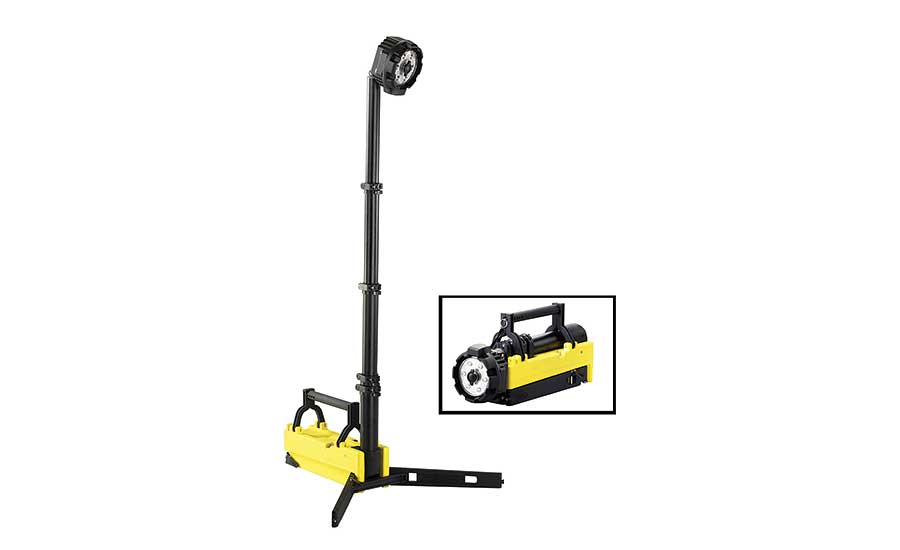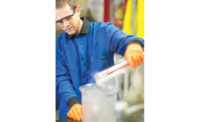From flashlights that perform like floodlights, to USB rechargeable lights that can be charged on the go, to safety-rated lights that protect workers in all types of hazardous environments, today’s professional grade flashlight products have come a long way. Continuing advances in lighting technology are yielding an unprecedented number of features and applications, giving rise to a new class of flashlights, lanterns and headlamps that are becoming indispensable tools on the job.
Whether you are a procurement manager, buyer, small business owner or industrial safety professional, following is a summary of some of the latest trends in professional lighting products that can optimize worker productivity, while keeping users safe on the job.
Amazing brightness
Workers in many industrial settings depend on high-quality flashlights or lanterns that deliver extreme brightness, particularly in low-light or other challenging conditions. LED technology has continued to evolve so that manufacturers can now offer high lumen products (500- 2,000+ lumens) that also maintain high levels of candela (the distance the light beam is “thrown”) and long run times. Products with high lumen technology essentially perform like floodlights: They can light up entire work scenes, including peripheral areas and corners, even illuminating potential hazards, near and far. Some models even combine superior down-range lighting with extraordinary lumen output, allowing professionals to inspect aerial sites from the ground or examine a potentially dangerous scene from a distance, for example.
Charging on the go
One of the biggest trends in flashlight technology is USB -rechargeable products, giving safety professionals and employees the ability to charge on-the-go from most any USB power source. USB rechargeable lights save time and avoid the worry of not having batteries on hand when they are needed most. They offer a quick, easy, and convenient way to recharge – workers can simply connect to a USB port, an AC wall adaptor, or use a USB charger that plugs into a service truck’s on-board USB port. Products that accept “dual fuel” or even multiple source battery back-ups are also a growing trend.
Keeping workers safe
Certain work settings are dangerous places for flashlights, which can act as a source of ignition in the presence of flammable gas and liquids, and other substances. Because the most hazardous conditions are often in dark places, many manufacturers offer a complete line of Division I safety-rated lights (and/or lights with ATEX and IECEx ratings for use in Zone 0 locations) for use when an explosive atmosphere is likely to exist under normal operating conditions. Examples include inside an oil or gasoline tank or in certain confined spaces.
In the U.S., some lights now have safety rating approval based on the requirements of the ANSI/UL 783 standard — the specific standard for flashlights used in hazardous locations — or ANSI/UL 913, the intrinsically safe standard for general electronic equipment. While either standard can direct certification to Division 1 level, it is important to note Class, Group and Temperature code requirements to select the correct flashlight for specific applications. (It’s also important to remember that while an intrinsically safe light carries a Class 1, Division 1 rating, not every product with a Class 1, Division 1 rating is considered intrinsically safe.)
Two lights in one
Another innovation in lighting is the multi-function flashlight, which combines such features as a spot beam for distance illumination and a flood light for close-up work; the two beams also can be used simultaneously to create an uninterrupted light pattern that optimizes navigation and eliminates blind spots that can lead to slips, trips and falls. Some models also add the convenience of a red laser pointer for illuminating and pinpointing objects at a distance.
Lightweight, hands-free area lights
The headlamps of yesteryear were often bulky and heavy to wear around the head or a hard hat. Today’s headlights are increasingly lightweight (some models weigh only slightly more than an ounce); many also feature an exceptionally low profile for enhanced wearability and ease of use, especially in confined spaces. Enabling hands-free operation while also maximizing worker safety, many now combine multiple features into a single headlamp. They can offer a choice between spot and flood beams for close up or distance lighting; high and low modes; and USB rechargeable and multiple battery options. They also are easy to use, permitting feature selection with just a click. Several varieties also enhance job safety with ratings that meet the requirements of Division 1 hazardous locations, while still others incorporate high lumen technology, in the range of 600-1,000 lumens.
Trends in scene lighting
Recent innovations in scene lighting offer greater ease of use, productivity enhancements, and important safety benefits. While earlier models of scene lights were heavy and hard to maneuver, the newest class of these products features narrow footprints, making them easy to store and transport.
Workers can deploy these lights in a matter of seconds. Some feature a rotating head that can extend on a telescoping pole; the pole is supported by stabilizing legs that workers can easily lock to provide balance on uneven surfaces. While ideal for illuminating wide, open environments (some exceed 5,000 lumens), this new type of scene light also is flexible enough to be positioned over a manhole, for example, increasing worker visibility in tight, dark spaces. In addition, new technology exists to ensure battery life lasts for several shifts, even days, which can be critical when performing emergency repairs during a power outage or under other severe conditions, for example.
Bottom line
Lighting technology continues to evolve at high speeds, giving industrial professionals a wide range of effective new tools when it comes to high-performance flashlights, lanterns, and headlamps. New high lumen technology; scene lighting and rechargeability innovations; and growing options in hazardous location products are among innovations. These and other features not only enhance productivity, but also are critically important for keeping workers safe in the environments in which they operate.

